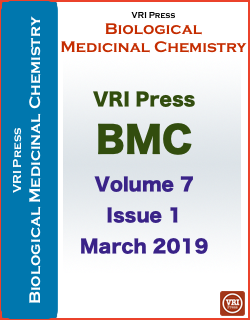
Comparative Analysis on Antioxidant Activities of Barks from Sonneratia caseolaris Grown in Three Saline Zones of Sundarbans
Abstract
Sonneratia caseolaris is a medicinal mangrove plant whose barks possess high content of bioactive compounds that exhibit different pharmacological activities viz. antioxidants and antimicrobial activities. High salinity is responsible for ion poisoning and subsequent oxidative stress. Total alkanoids of S. caseolaris barks was highest in high saline (HS) zones (6.35±0.32 g/100g extract) followed by moderately saline (MS) and low saline (LS) zones (5.78±0.23 and 5.23±0.36 g/100g extract, respectively). The orders (from highest to lowest value) of total saponins of S. caseolaris barks were found in HS, MS and LS zones (10.02±0.4 > 9.18±0.4 > 8.07±0.5 mg/g extract, respectively). Highest, moderate and lowest tannins of the plant barks were observed in HS, MS and LS zones (5.15±0.29, 4.81±0.21 and 4.39±0.24 g TAE/100g extract, respectively). Total phenolics of S. caseolaris barks was highest in MS zones (5.75±0.3 g GAE/100g extract) followed by LS zones (4.87±0.19 g GAE/100g extract) and HS zones (4.61±0.25 g GAE/100g extract). Highest, moderate and lowest flavonoid contents of the plant barks were found in MS, LS and HS zones (8.97±0.28, 8.21±0.47 and 8.05±0.39 g QE/100g extract, respectively). In the present study, highest phenolics and flavonoids of S. caseolaris barks were found in MS zones while highest alkanoids, saponins and tannins of the plant barks were found in HS zones of Sundarbans.
DOI: http://dx.doi.org/10.14259%2Fbmc.v7i1.226
Refbacks
- There are currently no refbacks.








